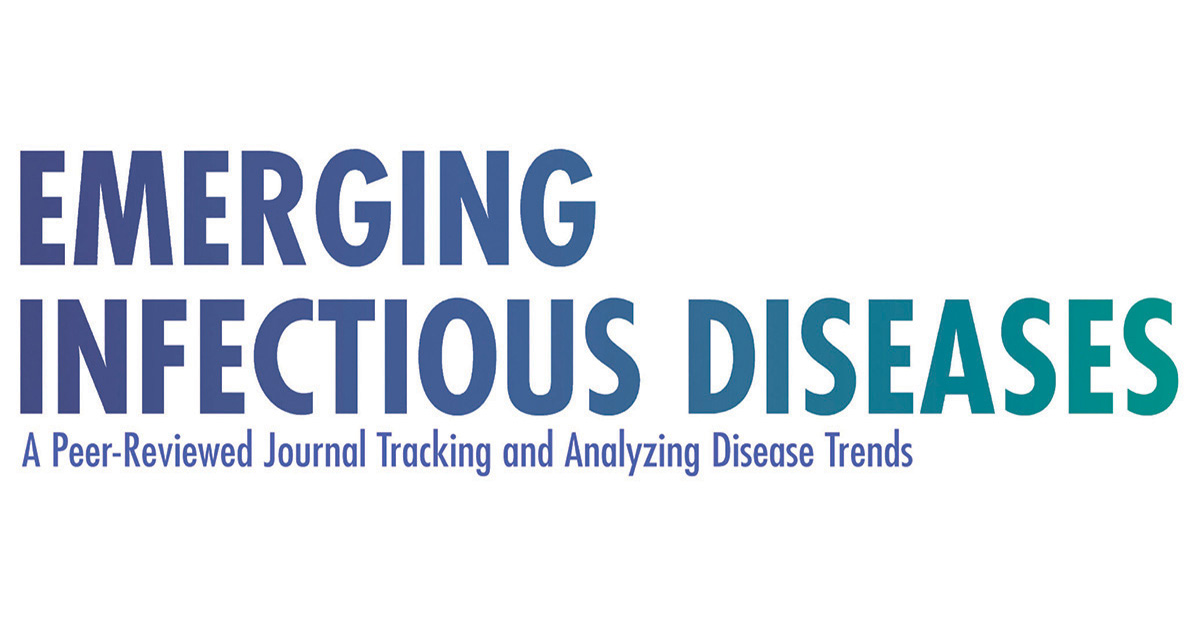Fitness
Early Release – Panton-Valentine Leukocidin–Positive Staphylococcus aureus in Family and Pet Cat – Volume 30, Number 8—August 2024 – Emerging Infectious Diseases journal

Disclaimer: Early release articles are not considered as final versions. Any changes will be reflected in the online version in the month the article is officially released.
Author affiliations: Freie Universität Berlin, Berlin, Germany (A. Bethe, A.-K. Schink, J. Brombach, S. Schwarz, A. Lübke-Becker); German Environment Agency, Berlin (A. Bethe, B. Walther); Laboratory Diagnostics Germany, Cuxhaven, Germany (A.-K. Schink); Robert Koch Institute, Berlin (L. Epping, T. Semmler, B. Walther); Kleintierpraxis am Kenntemichplatz, Troisdorf, Germany (S. Reinhardt); University Hospital, Bonn, Germany (E. Molitor, S. Müller, J. Balks); Universitätsmedizin, Essen, Germany (R. Köck)
Panton-Valentine leucocidin (PVL)–producing Staphylococcus aureus (PVL-SA) is typically associated with skin and soft tissue infections, such as abscesses (1). Transmission occurs between persons in close contact, often causing clusters of community-onset infections, especially within families (1). PVL-SA contains the genes lukS and lukF, which encode 2 toxin components capable of forming a pore-like octamer on neutrophil membranes, leading to cell lysis, local inflammation, and tissue damage (2). Because staphylococci colonize the nares, pharynx, and skin, infection reemergence occurs in the case of abrasions or wounds, enabling PVL-SA to cross the skin barrier. Topical decolonization of the skin and other body sites during or after acute PVL-SA infections is part of the therapy (3). In this article, we describe the successful decolonization of a family in Germany, comprising 2 adults and 2 children, who experienced severe recurrent PVL-SA infections and multiple unsuccessful decolonization attempts with increased hygiene measurements over an extended period.
The consultant laboratory for methicillin-resistant staphylococci in veterinary practice and clinic (CL-MRS-VPC), located at the institute of microbiology and epizootics, Freie Universität Berlin, was contacted in January 2022 because a family affected by severe repeated soft tissue infections caused by PVL-SA had undergone 3 unsuccessful decolonization attempts. Everyone in the family had experienced multiple (5–15/person) skin abscesses caused by PVL-SA since 2017. The 3 unsuccessful ambulatory decolonization attempts of the family were performed by the University Hospital in Bonn, Germany, according to a standard protocol (Charité, https://hygiene.charite.de/forschung/arbeitsgruppen/ag_pvl_bildender_staphylococcus_aureus). A review and assessment of possible reinfection sources by the clinicians led to the initial sampling of 2 household cats. Samples from both cats (oral, nasal, inguinal, perianal, and rectal) were screened at CL-MRS-VPC.
We cultured all swab samples as previously described (4). We identified the S. aureus isolates by using matrix-assisted laser desorption/ionization time-of-flight mass spectrometry (Bruker, https://www.bruker.com). We conducted antimicrobial susceptibility testing by using the VITEK2 system (bioMérieux, https://www.biomerieux.com) according to Clinical and Laboratory Standards Institute clinical breakpoints (5). We used PCR on the S. aureus isolates recovered to detect PVL-encoding genes (lukF and lukS) (6). We isolated methicillin-susceptible S. aureus (MSSA) from the oral cavity and nostrils of both cats. Cat 1 was confirmed as a carrier of PVL-positive MSSA, and cat 2 carried PVL-negative MSSA (Table; Figure). We further investigated whether the feline MSSA strains were circulating in the family by conducting whole-genome sequencing of both feline strains and PVL-positive and PVL-negative MSSA strains obtained from samples of the human family members (Table).
We performed a de novo assembly of the paired-end reads and annotated the resulting genomes as previously described (7). We generated an alignment of the maximum common genome from the study set to identify single-nucleotide polymorphisms (SNPs). The SNP analyses showed close clonal relationships of both the PVL-MSSA, assigned to sequence type 8 (range 10–12 SNPs), and the PVL-negative MSSA strains, assigned to sequence type 45 (range 1–7 SNPs), isolated from human and feline samples. The lukS and lukF genes of the PVL-MSSA isolate shared 100% nucleotide sequence identity and coverage with the corresponding genes in strain USA300 FPR3757 (GenBank accession no. 87125858), an epidemic clone of community-acquired methicillin-resistant S. aureus (8).
According to regulations in Germany for research with animal subjects, attempts to decolonize cats by using amoxicillin/clavulanate do not need approval (Landesamt für Gesundheit und Soziales, Berlin, pers. comm., letter, 2023 Feb 6). We performed an initial attempt to decolonize the cats on the basis of antimicrobial susceptibility testing results involving oral administration of amoxicillin/clavulanate for 10 days (Figure). The decolonization attempt was accompanied by hand washing and isolation of the cats indoors.
Samples from cat 2 were negative for S. aureus after 10 days, but cat 1, which was PVL-SA–positive, required a second course of antimicrobial drugs (Figure). Because cat 1 refused oral administration of antimicrobial drugs for the second decolonization, a 14-day course of amoxicillin was administered parenterally. Swab samples from cat 1 taken on days 58 and 79 after the second decolonization yielded negative results (Figure). A fourth attempt to decolonize the entire family was conducted in parallel and was successful, according to samples taken from the family 1 week, 3 months, and 6 months after decolonization.
When recurrent PVL-SA–associated soft tissue infections occur within a family and increased hygiene measures and decolonization attempts are repeatedly unsuccessful, clinicians should consider that pets may be involved in the transmission circle. Because the close phylogenetic relationship of the human and feline isolates in this case strongly suggested transmission, our findings highlight the importance of considering colonized or infected pets as a potential source of reinfection for humans during S. aureus decolonization attempts, as previously reported (9,10). In such cases, cat decolonization attempts require antimicrobial drugs that are well tolerated and approved as first-line treatments in veterinary medicine. Feasibility of treatment and animal welfare of the feline outpatients should be taken into consideration.
Dr. Bethe is a veterinary microbiologist at the Freie Universität Berlin. Her research interests include clinical microbiology, antimicrobial stewardship, and antimicrobial resistant bacteria.










